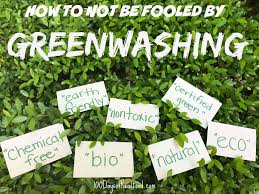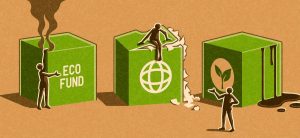Annika Patterson
Trees are the lungs of our earth, they sustain and increase quality of life, and they filter the air as humans pump harmful chemicals into the atmosphere. A tradition as old as American western expansion is the nationally recognized holiday of Arbor day. Arbor day was first practiced in Nebraska on April 10, 1872 in a statewide effort to make up for a lack of trees in Nebraska’s natural environment. Prizes were offered for planting the most trees properly and on this first Arbor day an estimated 1 million trees were planted. By 1920, 45 states and territories were celebrating the holiday and now it is celebrated in all 50 states. While not always under the Arbor day banner, the general spirit of this holiday is shared all over the globe as communities gather to plant trees for a greener tomorrow.
This year, the Greenbelt celebrated this incredible holiday in October, as COVID-19 has led to plenty of scheduling issues. The Greenbelt community, with the generous help of TreesUpstate, worked to plant two trees on the lawn near the Belltower. My group, The cabin, worked to plant our wilting cherry tree, Sherry.
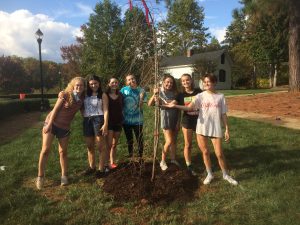
I’d say we did a pretty good job.
In our current political and world environment, advocacy for the protection of our trees and the action to plant them is increasingly important. In the United states, under the new commander and chief, 100,000’s of acres of land previously set aside for national parks and under federal protection are being served up for potential development and mining. National Parks services are also facing extreme budget cuts and losing much of their voice in our beautiful parks present and future. Trees and the bountiful ecosystems they host are so very important and deserve our protection. Only through sharing our voices and advocating for these natural spaces will they be preserved.
Citations
“The Importance of Trees – Learn Value and Benefit of Trees.” SavATree,
www.savatree.com/whytrees.html.
“History of Arbor Day.” History at Arborday.org,
www.arborday.org/celebrate/history.cfm.
Hunter, Dana. “The Trump Administration’s Effect on National Parks.” Scientific
American Blog Network, Scientific American, 28 Aug. 2017,
blogs.scientificamerican.com/rosetta-stones/the-trump-administrations-effect-
n-national-parks/.
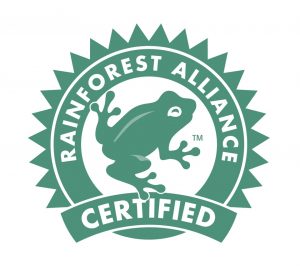

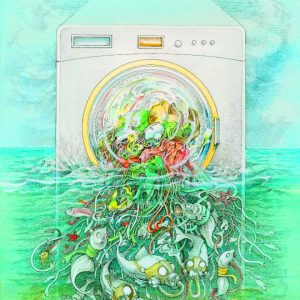


 event on behalf of one of the clubs I am in, Furman Creative Collaborative/TEDx. Being the ambitious and overcommitting person I am, I said YES. Now I am sure by now you find yourself wondering why all of this is important, but here it is. IDEAS into ACTIONS!
event on behalf of one of the clubs I am in, Furman Creative Collaborative/TEDx. Being the ambitious and overcommitting person I am, I said YES. Now I am sure by now you find yourself wondering why all of this is important, but here it is. IDEAS into ACTIONS!